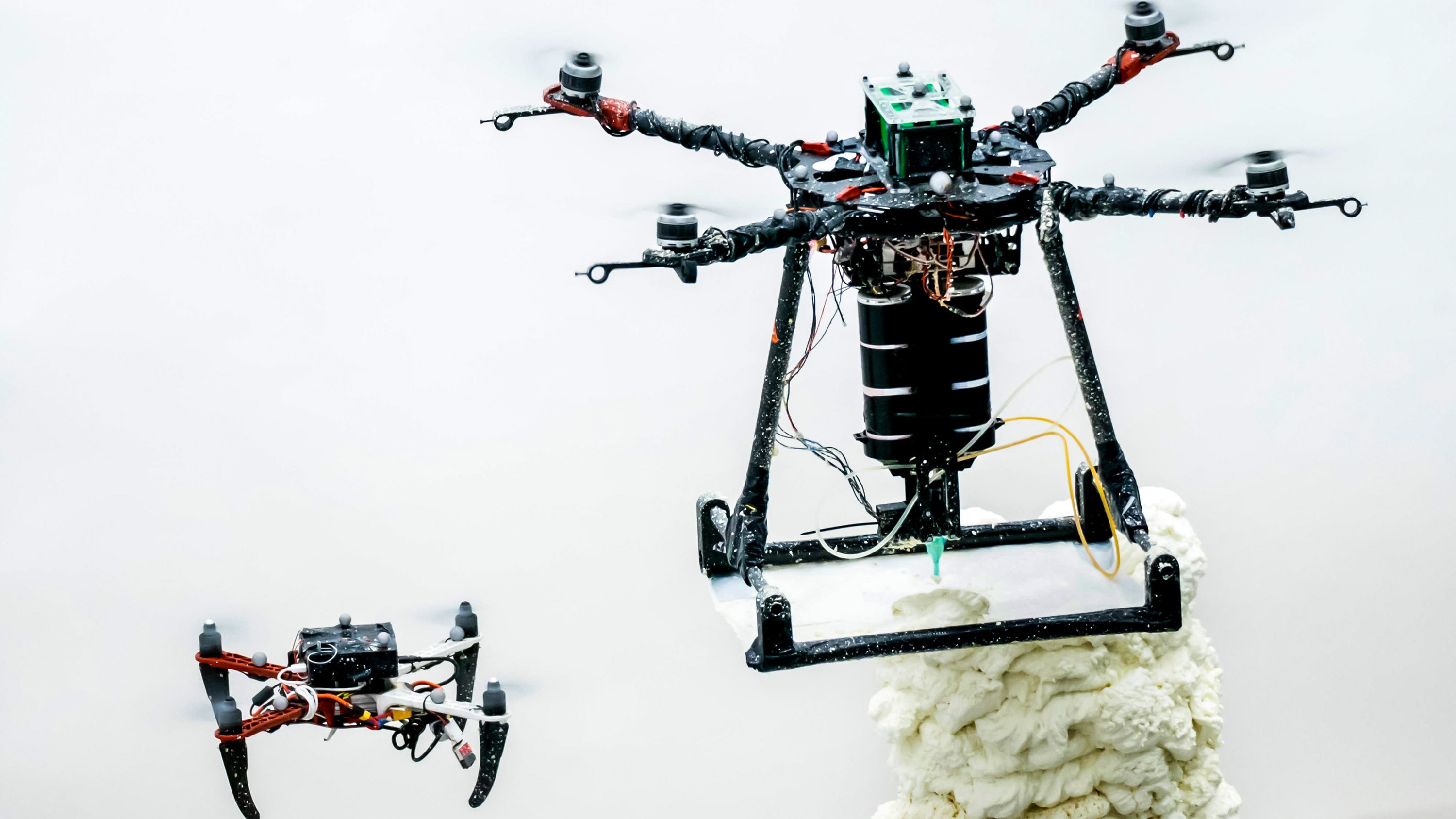Watch this team of drones 3D-print a tower
The new technique, inspired by nature, involves multiple drones working together to build from a single blueprint.

A mini-swarm’s worth of drones have been trained to work together to 3D-print some simple towers. One day, the method could help with challenging projects such as post-disaster construction or even repairs on buildings that are too high to access safely, the team behind it hopes.
Inspired by the way bees or wasps construct large nests, the process has multiple drones work together to build from a single blueprint, with one essentially checking the others’ work as it goes. One drone deposits a layer of building material, and the other verifies the accuracy of everything printed so far. The drones are fully autonomous while flying, but they are monitored by a human who can step in if things go awry.
To demonstrate the drones’ capabilities, the researchers got them to use foam and a special lightweight form of cement to build structures with heights ranging from 0.18 meters to 2.05 meters. They were constructed to within 5 millimeters of the original blueprint.
Then, to show that the system could work on more complex formations, the team used the lights on the drones to create a light-trail time-lapse sequence as they simulated making a tall dome-like structure. Their work is described in a paper in Nature today.
Mirko Kovac, director of the Aerial Robotics Laboratory at Imperial College London, who led the research, says the method could be used to construct buildings in the Arctic or even on Mars, or simply to help repair tall buildings that normally would require expensive scaffolding.
The technique is limited for now because drones struggle to carry heavy loads, need regular charging, and still require human supervision. However, the researchers say they’re hoping to alleviate some of these issues by automating the charging of drones during projects, a process that is currently handled by humans.
Deep Dive
Artificial intelligence
Large language models can do jaw-dropping things. But nobody knows exactly why.
And that's a problem. Figuring it out is one of the biggest scientific puzzles of our time and a crucial step towards controlling more powerful future models.
Google DeepMind’s new generative model makes Super Mario–like games from scratch
Genie learns how to control games by watching hours and hours of video. It could help train next-gen robots too.
What’s next for generative video
OpenAI's Sora has raised the bar for AI moviemaking. Here are four things to bear in mind as we wrap our heads around what's coming.
Stay connected
Get the latest updates from
MIT Technology Review
Discover special offers, top stories, upcoming events, and more.